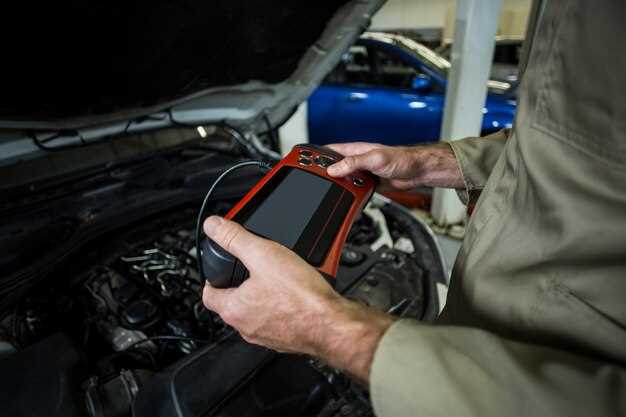
How to Check Brake Fluid Levels Properly
- Arthur Rodriquez
- 0
- Posted on

Regular inspection of your vehicle’s brake system is crucial for ensuring optimal safety and performance on the road. One of the key components of this system is the brake fluid, which plays a vital role in hydraulic braking. Neglecting to check your brake fluid levels can lead to significant issues, ranging from diminished braking power to complete brake failure.
Understanding how to properly check your brake fluid levels is essential for every driver. This process not only involves looking at the fluid level but also assessing its condition. Brake fluid can absorb moisture over time, which may compromise its effectiveness. Therefore, being aware of both the quantity and quality of your brake fluid is critical for maintaining your vehicle’s braking system in top condition.
In this article, we will guide you through the steps required to inspect your brake fluid levels accurately. You’ll learn how to identify the necessary components and understand what to look for to ensure that your brake system functions effectively. Proper maintenance of brake fluid can make a significant difference in vehicle safety and reliability.
Understanding Brake Fluid Types and Specifications

Brake fluid is a critical component of any vehicle’s braking system. It is crucial to use the right type of brake fluid to ensure safe and effective braking performance. The two primary categories of brake fluids are DOT (Department of Transportation) fluids and SAE (Society of Automotive Engineers) fluids, with various classifications under each category.
DOT fluids are commonly used in modern vehicles and are further classified into several types, including DOT 3, DOT 4, DOT 5, and DOT 5.1. Each type offers different boiling points, chemical compositions, and characteristics specific to the needs of various braking systems. For instance, DOT 3 and DOT 4 fluids are glycol-based and absorb moisture over time, potentially lowering their boiling point and performance. In contrast, DOT 5 is silicone-based and does not absorb moisture, making it suitable for specialty applications, but it should never be mixed with glycol-based fluids.
When selecting brake fluid, one must consider the manufacturer’s specifications outlined in the vehicle’s owner manual, as using the incorrect type can lead to brake failure or reduced performance. Additionally, it’s essential to monitor the fluid’s condition regularly, as brake fluid can degrade over time and become contaminated, which can also affect its properties and efficacy.
Proper maintenance of brake fluid levels and consistent checks of its type and specifications can greatly improve vehicle safety, ensuring that the braking system remains reliable and responsive during operation.
Step-by-Step Guide to Inspecting Brake Fluid Levels

To ensure optimal braking performance, regular inspection of your brake fluid levels is essential. Follow this detailed guide to properly check your brake fluid.
Step 1: Locate the Brake Fluid Reservoir. Typically, this reservoir is situated near the back of the engine bay, often near the driver’s side. Consult your vehicle’s owner manual for specific location details.
Step 2: Clean the Area. Before opening the reservoir, wipe away any dirt or debris surrounding the cap. This prevents contamination during the inspection.
Step 3: Check the Fluid Level. Most reservoirs have markings indicating the minimum and maximum levels. The fluid should be between these two indicators. If it is below the minimum mark, you need to add brake fluid.
Step 4: Inspect the Fluid Condition. Look closely at the fluid’s color and clarity. Healthy brake fluid is typically clear or light golden in color. If it appears dark, cloudy, or contaminated, it may need to be changed.
Step 5: Add Brake Fluid if Necessary. If the level is low, add the manufacturer-recommended brake fluid type. Avoid mixing different types of fluid, as this can compromise the braking system.
Step 6: Secure the Cap. Once the inspection and additions are complete, tightly secure the reservoir cap to prevent any leaks and contamination.
Step 7: Test the Brakes. After checking the fluid level, take a short drive to verify that your brakes are functioning properly. Pay attention to any unusual noises or changes in the pedal feel.
Regular brake fluid inspection is vital for vehicle safety. Following these steps ensures that your braking system remains in good condition.
Troubleshooting Low Brake Fluid Conditions
When you notice a drop in your brake fluid levels, prompt inspection is crucial to ensure your vehicle’s safety. Low brake fluid can lead to diminished braking performance, which may result in dangerous situations on the road. Begin your troubleshooting by checking the brake fluid reservoir. A low level in the reservoir typically indicates either a leak in the brake system or that your brakes are worn and require fluid replenishment.
If the fluid level is low, inspect the surrounding areas for any signs of fluid leaks. Common leak points include brake lines, calipers, and wheel cylinders. Keep an eye out for fluid spots under your vehicle or wet areas along the brake components. If you can’t find any leaks externally, you may need to investigate further under the hood or within the brake system itself.
Additionally, consider the condition of the brake pads. Worn brake pads can pull extra fluid from the reservoir as they wear down, leading to low levels. If the pads are worn, replacing them can help restore proper fluid levels. After any inspection or repairs, always top off the brake fluid to the manufacturer’s recommended level, using the appropriate type of fluid for your vehicle.
In summary, addressing low brake fluid conditions involves a thorough inspection for leaks and worn components. Taking these steps ensures your brake system functions effectively, contributing to your overall safety on the road.